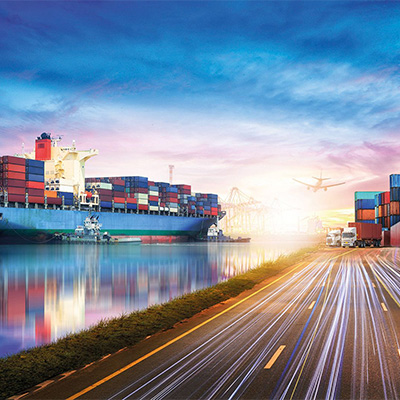Growing pressure on the retail sector could increase risk-taking in the supply chain, data in a new report suggests. With more than 7,500 shops closing in 2018 and high street brands hitting the headlines, if retailers are not able to manage the trade-off between risk and cost, it could lead to further store closures and the disappearance of more well-known brands.
Traditional stores under pressure to compete with online offerings may face increasing exposure to risk if they are forced to cut costs in their supply chain, according to the latest Global Supply Chain Risk Report, published today by Cranfield School of Management and Dun & Bradstreet.
Data for the retail sector shows increased levels of risk-taking since Q4 2018, with retailers reporting high levels of dependency on suppliers and indicating a propensity to off-shore to low-cost, high-risk countries where suppliers are more likely to be financially unstable.
Dr Heather Skipworth, Senior Lecturer in Logistics, Procurement and Supply Chain Management at Cranfield, said: “We know from recent news headlines about store closures, and the collapse of well-known chains, that the UK retail sector is under huge pressure at the moment. With many consumers preferring to do their shopping online, any retailer with a bricks and mortar footprint will be feeling the pressure.
“Analysis suggests that the sector is sourcing more from low cost regions, which are often associated with heightened risk and potential for supply chain disruption caused by political, environmental, or economic factors. There is also an increased probability of suppliers themselves being financially unstable in these countries. To mitigate against these risks, it is imperative retailers ensure they are practising dual supply strategies to help manage the trade-off between risk and cost and ensure smooth running of operations.”
Chris Laws, Product Leader at Dun & Bradstreet, said: “With retailers under pressure to identify cost efficiencies, it’s more important than ever for them to know exactly who they are doing business with to help minimise risk and ensure compliance with regulations. Having robust due diligence processes in place is key to ensuring the stability of the supply chain and maintaining responsible, ethical procurement practices. In a challenging economic environment, risk-taking is understandable, but retailers need to ensure they have a full picture of supply chain relationships to flag potential risks and protect their reputation.”
Data for Q1 2019 shows the retail sector experienced the greatest increase in risk since Q4 2018 out of the seven sectors measured, with three out of the four metrics increasing significantly. Three out of the four metrics are also at the highest level of all seven sectors reported.
The quarterly Global Supply Chain Risk Report investigates the level of perceived supply chain risk faced by European companies with international supplier relationships. Using four key metrics – supplier criticality, supplier financial risk, global sourcing risk, and foreign exchange risk – it assesses overall supply chain risk and provides businesses with a view of trends within their industry sector and the wider economy. By analysing trends by sector, the report highlights areas for monitoring and consideration in procurement decisions.
Analysis in the Q1 2019 report was carried out using proprietary commercial data supplied by Dun & Bradstreet, which included around 200,000 anonymous transactions between European buying companies and their suppliers in more than 150 countries worldwide.
The Q1 2019 Global Supply Chain Risk Report is available to download now from https://www.dnb.co.uk/perspectives/corporate-compliance/q1-2019-global-supply-chain-risk-report.html
A webinar on the results will be run on 19th June at 1.30pm. For more information and to register, visit https://www.brighttalk.com/webcast/13997/360879




